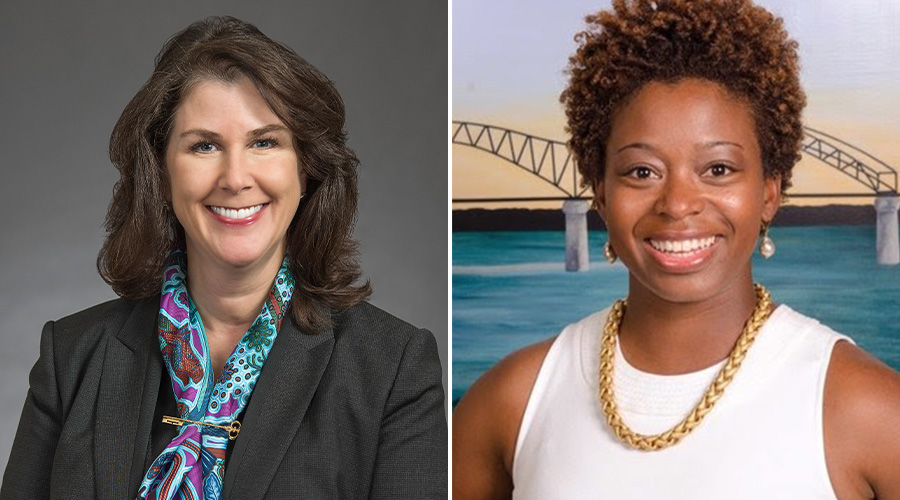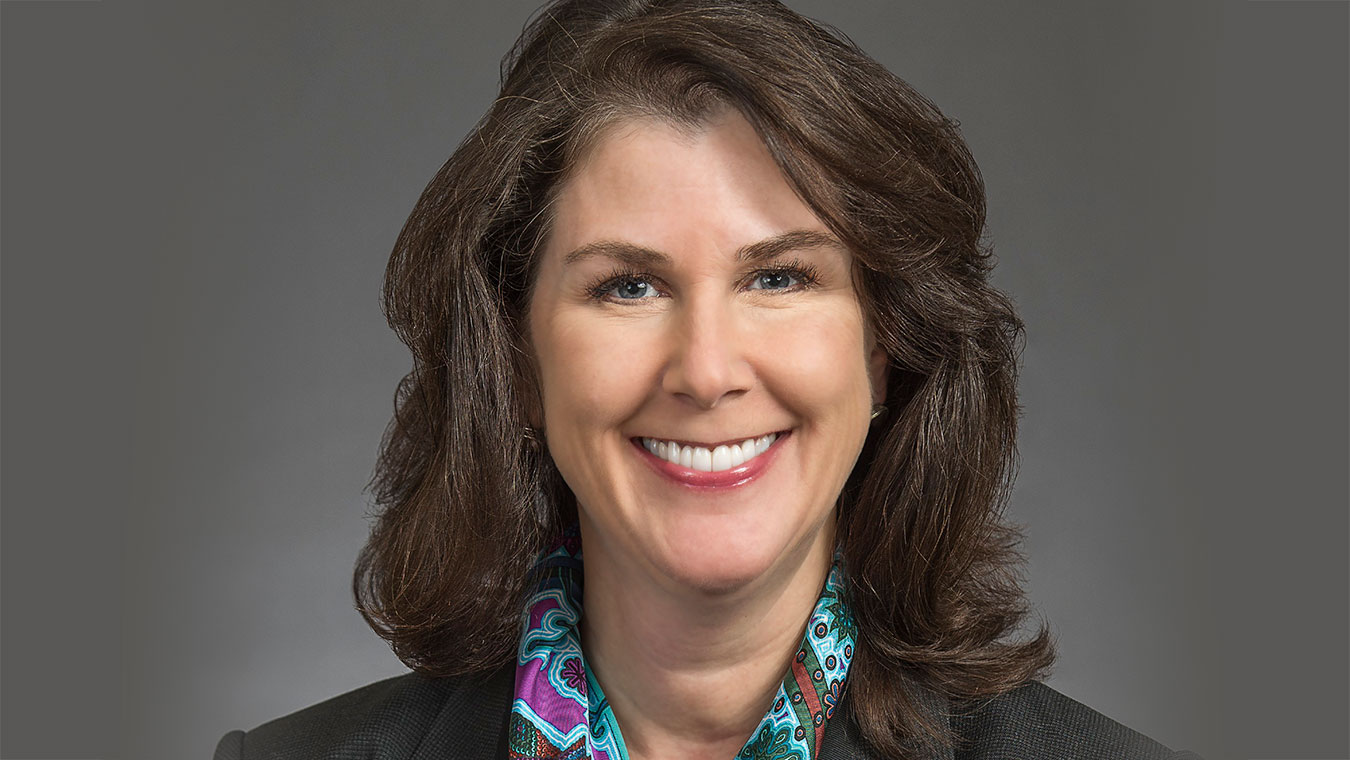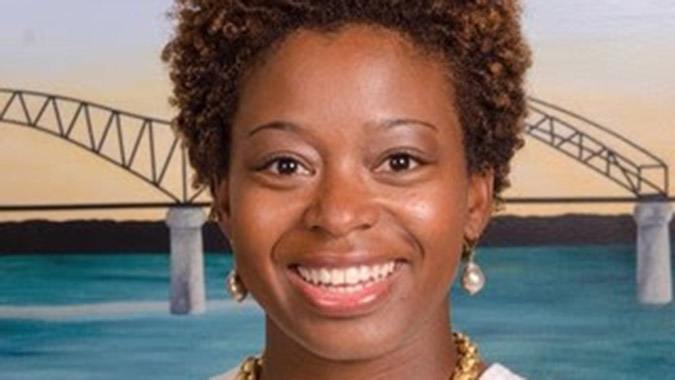Building tomorrow’s workforce today
1/28/2021 Freight-rail industry 'leans in' to diversity and inclusion
Editor’s note: On Feb. 20, it was brought to RailPrime’s attention that Roquita Williams is no longer an employee of Patriot Rail. Williams alleges that she was terminated by Patriot Rail, and in a complaint she says she filed against the company, she is alleging race and gender discrimination. RailPrime interviewed Williams for the following article on Dec. 7, 2020, when she was still a Patriot Rail employee. Asked this week to comment on Williams’ allegations, a Patriot Rail spokesperson confirmed that, as of Jan. 4, Williams is no longer with the company.
By Julie Sneider, Senior Associate Editor
If the past few years are any indication, the North American freight-rail industry is making strides in efforts aimed at creating a more equitable, diverse and inclusive workforce.
Two prominent examples: In 2019, Canadian Pacific’s board elected Canadian business leader Isabelle Courville as its chair, the first woman to chair a Class I board of directors; and last year, BNSF Railway Co. promoted Executive Vice President of Operations Kathryn Farmer to succeed Carl Ice as president and chief executive officer effective Jan. 1. Farmer, who also assumed the leadership of BNSF’s board, is the first woman to run a Class I.
Most, if not all, Class Is have workforce equity, diversity and inclusion initiatives underway, according to the railroads’ websites and corporate sustainability reports. Those efforts are in response to freight-rail executives’ acknowledgment that the railroad industry must move beyond its image as a male-dominated business in order to remain competitive with other industries.
Union Pacific Railroad is among those that have made a concerted effort to recruit and retain more women and people of color in recent years. But in May 2020, the company kicked things up a notch by announcing a target: The Class I aims to double the representation of women from the current 5.5% of its total workforce to 11% by 2030. UP already had a goal of expanding minority employee representation from 29.7% to 40% by 2030.
“We’ve always had goals, but never defined them,” explains UP Executive Vice President and Chief Human Resource Officer Beth Whited. “I think our company and the rail industry is better with a real target.”
According to UP’s 2019 “Building America” report on its corporate sustainability practices, the company will achieve a stronger performance through an inclusive workforce that “reflects the diverse markets and communities we serve.” UP leaders accept research that has shown that businesses with diverse workforces are more successful, innovative and earn higher revenue.
 Beth Whited, EVP and chief human resource officer, Union Pacific Railroad
Beth Whited, EVP and chief human resource officer, Union Pacific Railroad“The science behind having a diverse workforce is certainly attractive, but we also think it’s the right thing to do,” Whited says.
To meet its defined targets, UP is taking a multipronged approach, starting with a close examination of its recruiting, hiring and retention processes.
“We thought about how to knock down barriers that we’ve unintentionally built to make sure we reach those goals,” Whited says.
UP has taken several steps to change how it sources talent, starting with where it looks for potential candidates.
“We now have a huge focus on making sure the colleges and trade schools that we recruit from and the career fairs that we attend all have a better availability of women and minorities than the places we’ve gone to in the past,” says Whited.
Words matter
One change made to UP’s sourcing practices involved rewriting job-availability advertisements that may have discouraged female candidates from applying for positions at UP. The company deployed a new software that helps ensure language used in job postings is attractive to women as well as to men. Based on scientific research into how women and men affiliate with certain terms, the software flags words that may discourage women from applying for a specific type of job, Whited says.
For example, men are more likely to define themselves as “proficient” after less work experience than women expect to have before they’ll call themselves proficient. To address that difference, UP is using words that indicate the company’s willingness to train candidates for positions.
Another example: UP’s HR officials realized the company’s descriptions and postings for jobs that required working outdoors were written in a way that unintentionally favored male candidates. The software has helped the company reword those listings so that job positions would appeal equally to men and women.
On the hiring side of the equation, UP is rethinking some of the physical abilities tests associated with certain positions.
“You have to be able to move switches and lift certain amounts of weight, and many of those requirements have been in place for many years,” says Whited. “Over time, technology improved some of those physical challenges, so we are rigorously going through those tests and saying, ‘Are they still necessary? And if they are, are there accommodations we can make?’”
UP also examined the makeup of its candidate interview teams so that the people doing the interviewing are representative of the diverse perspectives the company is trying to attract, Whited says.
“We want to make sure if you come in to do an interview at Union Pacific, you have the opportunity to be successful, and one of the best ways to do that is you’ll be able to talk to a panel of people where at least one person looks like you,” she says.
While increasing the representation of women and minorities at UP is a priority, so, too, is ensuring those employees want to stay with the company once they’re hired. As a result, UP is trying to tackle the kinds of issues that discourage employees from staying and moving up in the organization.
One of those issues relates to work-life balance, which in railroading is especially challenging due to its 24/7, 365-day-a-year schedule. And for women raising small children, late-night work shifts or overnight travel requirements can be particularly daunting. To help alleviate such concerns, UP has implemented a number of pilot programs and benefits that support child-care needs. One pilot — called “Milk Stork” — provides dry ice and shipping containers to nursing mothers so they can send home breast milk while traveling for business.
“We are deeply analyzing what are the ‘pain points’ of being a woman working at UP, especially in the field roles, and how we can take those issues off the table so that we are an employer of choice for women in nontraditional roles,” says Whited.
Another way UP has tried to make sure it’s an employer of choice: The company has expanded to nine the number of its employee resource groups (ERGs) that raise awareness and provide an environment where people of all backgrounds can realize their potential. More than 2,200 UP employees are active in at least one of the ERGs, which include the Asian Employee Resource Organization; Black Employee Network; LGBT Employee Network; Council of Native American Heritage; Latino Employee Network; and A Woman’s Initiative — Lead, Educate, Achieve and Develop.
Moreover, the company aims to ensure its pipeline for leadership positions remains diverse. UP internally conducts annual talent reviews by department that focus on individual employees who have the potential to move up.
“That [review] also gives us the opportunity to look at the diversity of our team and where we have people with a lot of potential,” Whited says. “This year, we are intentionally nominating women and people of color for executive sponsorship so that our best and brightest will have the opportunity to have executive sponsors to help them navigate their careers.”
It hasn't happened 'organically' over time
The railroad industry — through initiatives such as those pursued by UP — has made progress in diversifying its workforce over the past decade or so, says Roquita Williams, who in October 2020 joined Patriot Rail Co. LLC as assistant vice president of sales for the commercial team.
UK’s Railway Industry Association launches ‘equality, diversity and inclusion’ charter
Efforts to diversify the rail industry’s workforce are not limited to North America. In November 2020, the Railway Industry Association (RIA) and Women In Rail (WR) launched an “equality, diversity and inclusion (EDI) charter” to support diversity across the United Kingdom’s rail sector. Backed by more than 100 companies and organizations, the charter calls on employers to commit to pursuing a “more balanced, higher-performing” rail sector by diversifying the workforce.
RIA is the trade group that represents the UK’s rail suppliers; WR is a nonprofit organization formed in the UK in 2012 to recruit women into the rail industry’s ranks.
The charter is open to all UK rail companies, clients and organizations that want to achieve EDI goals, WR and RIA officials said in a statement posted on WR’s website.
While the rail industry has worked hard in recent years to promote EDI within its workforce, it’s important to strengthen those efforts “to ensure we attract and harness the skills, knowledge and insight from everyone representing all parts of our society and our customers,” WR Founder and Director Adeline Ginn noted.
Among the commitments called for in the charter: Companies must appoint a member of the senior leadership team as an EDI champion; agree to an EDI action plan and monitor and report on progress made; provide training opportunities that lead to more diverse representation at senior and executive levels in the UK rail industry; create a culture that fosters inclusion and provide a safe space for employees of all backgrounds to talk openly; and change recruitment and progression processes to attract, retain and develop employees of all backgrounds, ages, genders and identities.
“Whilst there has been plenty of progress in the rail supply sector which we should be proud of, there is still more to do to promote diversity and equal opportunity,” said RIA Chairman David Tonkin and Chief Executive Darren Caplan in a joint statement.
A woman of color, Williams says she’s a testament to the rail industry’s efforts to have an equitable, diverse and inclusive labor force. At Patriot Rail, she’s responsible for accelerating revenue at its 12 short lines, developing new business channels and contributing to the company’s overall strategies. She has more than 20 years of experience in the supply chain industry, managing teams of more than 300 sales representatives and revenue in excess of $100 million, according to Patriot Rail’s October 2020 press release that announced her hiring.
Williams previously worked for CN, where she was responsible for marketing strategy and commercial relationships for shippers across the United States and Canada. She also held various commercial roles in CN’s supply chain division. Before that, she worked for UPS as a solutions manager.
When Williams entered railroading 13 years ago, she noticed “an absence of consideration” in the industry about the real challenges involved in building a diverse pipeline of employees, she says. There was a naivete among some leaders that diversity and inclusion would just happen “organically” over time. Since then, she’s witnessed what she calls an “eye-opening” about employee diversity and inclusion.
“It took a bit of time and perhaps some people like me with really big mouths to say, ‘Hey, guys, it doesn’t work as organically as we hoped,’” Williams says. Diversifying a workplace raises new challenges that have to be addressed so that all employees believe they can reach their potential, she adds.
Williams was drawn into workplace conversations about diversity — not because she had an HR background or skills (she did not) — but because she “literally was the only black woman in the room at times” and was invited to participate, she says.
“I started getting these calls, and then I realized that I was responsible for educating myself on every side of this issue,” Williams says. “I’m responsible to not just react as a person who is a diverse candidate, but to also understand the specific challenges that our senior leaders and the [HR] people on the front lines have on how to close the diversity gap. I felt I could be a bridge that could help fill that gap.”
Now, when Williams gives talks to business groups and other professionals about diversity and inclusion, she cites the following quote: “Diversity means being invited to the party; inclusion is being asked to dance.”
It’s up to both the employer and the employee to make inclusivity a reality, Williams believes. When mentoring individuals who want to advance in their careers, she recommends they volunteer for strategic civic or “servant” leadership opportunities — either those offered by the employer directly or in the community the company serves. Volunteering on a nonprofit board or for a civic organization can help individuals develop leadership skills they’re not yet using on the job, Williams says.
 Roquita Williams, AVP of sales for the commercial team, Patriot Rail Co. LLC.
Roquita Williams, AVP of sales for the commercial team, Patriot Rail Co. LLC.While she believes the North American rail industry “still has some work to do” when it comes to achieving equality, diversity and inclusion, she’s confident it will get there.
“The railroad leans very heavily into innovation,” she says. “And as rail leaders have leaned into innovation, they’ve looked at the most innovative companies around the world and said, ‘How does our company look different?’ As [they’ve done] that, they’ve seen a diversity gap that needs to be closed.”


